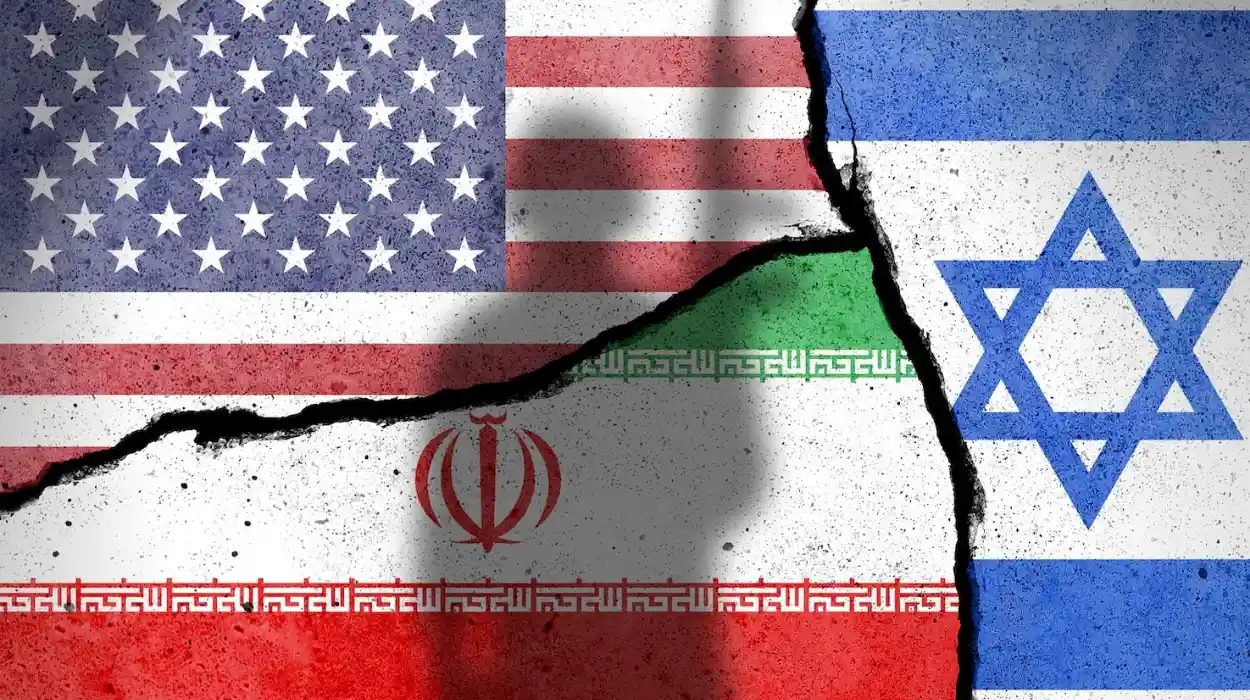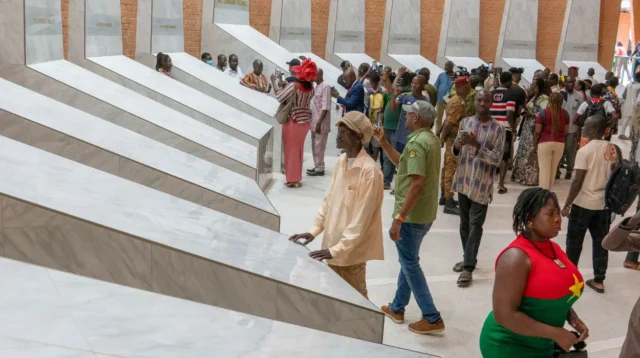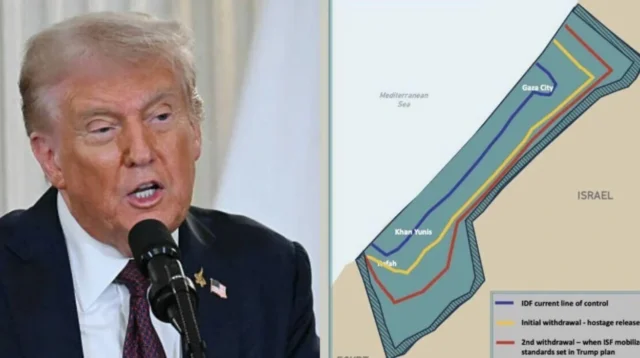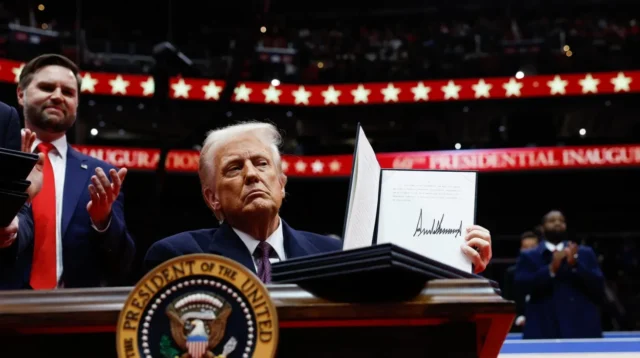The eruption of direct hostilities between Iran and Israel in June 2025, often referred to as the “Twelve-Day War,” began with a calculated Israeli preemptive strike—Operation Rising Lion—on June 13. This was a campaign against the Iranian nuclear enrichment facilities, the missile development sites and the senior leaders of the Revolutionary Guard. The Israeli authorities came up with reports of impending dangers posed by Iran to the intensifying nuclear program, which was used to justify the attack. The attacks are reported to have rendered sections of the Arak and Natanz plant in Iran disabled and killed a handful of senior members of the Iranian government including an IRGC Aerospace commander Amir Ali Hajizadeh.
Iran reciprocated by launching a barrage of more than 550 ballistic missiles, and 1,000 suicide drones, that targeted Israeli cities, and key military infrastructure. In Tel Aviv, Haifa and Jerusalem, hours of sheltering occurred in civilian places. The West responded by the United States carrying out precision airstrikes against Iranian nuclear facilities on June 22, which was its most direct military action since 2020. Quick military relocation to prevent future Iranian repression was hinted at by the USS Nimitz’s and 4,000 more troops’ prompt deployment to US bases in Qatar and the United Arab Emirates.
These operations revealed new realities in the military. Whereas Israel displayed its dominance in the air and the ability to target effectively with the help of intelligence, Iran displayed a well-developed and capable missile capability to neutralize regional air defenses. The time span of the war was very short but the effect of the war was quite deadly as sarcastically over 1,100 Iranian lives have been lost not to mention the casualties of Israeli civilians of about 30 and damages done to both sides’ infrastructures.
Iran’s Warning and Military Posture
Following the ceasefire, Iran’s Supreme Leader Ayatollah Ali Khamenei declared that any additional aggression by Israel or the U.S. would provoke a “stronger and more decisive response.” It was repeated by the Foreign minister, Abbas Araghchi, who stressed on the sovereign right of Iran to protect its territory and their nuclear program which they claim is not yet a military program.
The warning by Iran is supported by the recent improvements in the missile program of Iran such as the launch of the Khorramshahr-4 ballistic missile and the purported development of the hypersonic missiles. Iranian authorities think that such a position of tangible, transparent deterrence, particularly towards soft targets such as regional bases of the United States, may transform the strategic reasoning of both opponents.
At home, the message is taken on by the hardliners in Tehran, which views the June tussle as evidence that Iran can take a first strike, and later be able to strike back as well. Such a confident political environment makes it difficult to diplomacy and introduces greater possibility of escalation that may be achieved due to misunderstanding or to proactive thinking.
Diplomatic Context and International Dimensions
The Fragile Ceasefire and Political Narratives
With Qatar and backchannel negotiations involving U.S. and European Union diplomats playing the role of brokers, ceasefire negotiations have not led to long-term de-escalation in June. Both parties treat the armistice as just a break in operation and not as a change in actual action strategy.
According to Israel, it caused setbacks of at least two years in the Iranian nuclear program and points to satellite imagery of destroyed uranium centrifuge halls and construction suspended in Fordow. Iranian authorities argue with these conclusions claiming that important elements were taken beforehand. Tehran has also halted cooperation with the IAEA, further making monitoring of the occurrences in the region more difficult to control and further raising the speculations that Tehran has nefarious motives towards nuclear capabilities.
Although Washington insists that it is not in search of a war, the talks issued by President Trump have attracted criticism given that it contributes to instability. The perception of escalatory action with regard to Iran was indeed encouraged by his comments on June 24 stating that should Iran retaliate again, “will be hit harder than ever before”, but even at this the administration spokespeople maintained that an open war was not a prospect.
Regional and Global Implications
The bound of this conflict is not bound with Iran alone, and not with Israel alone. The strategic relationships that Iran has with Hezbollah, the Houthis, and Iraqi militias provide a prospective second-fronts retaliation mechanism. Although these groups were not much active during the June war, western intelligence experts caution that unless something changes, they could easily upset the regional missile defense structures and result in instability in Lebanon, Gulf and even most parts of Eastern Syria.
In the meantime, the U. S. bases in Qatar, Bahrain, and Kuwait are considered as the possible flashpoints. When the Iranian missile attack against the Al Udeid Air Base occurred on June 21, such visible but nonlethal targeting was generally viewed as a more nuanced form of communication than out-and-out aggression. However, the strike’s precision demonstrated Iran’s ability to target high-value U.S. assets without triggering all-out war.
Both Russia and China have urged caution and Russia has threatened the United Nations of the dangers to regional implosion. In a move that shows Beijing is also concerned with energy security, Beijing has called for restraint as it has also been reported to conduct more military coordination drills with Iran in Strait of Hormuz. Gulf States have embarked on offensive silence in order to evade the temptation of getting involved in the next regional crisis, but the fact that the U.S troops still remain in their territory amounts to the Gulf states being de facto stakeholders.
Balancing Escalation Risks and Strategic Calculus
The approach of Iran to posturing is a measured deterrence. The ongoing situation of public warning as well as the pictorial missile tests and military operations seeks to ensure that the consequences of such future attacks by Israel or America do not result in the fulcrum of catastrophic reprisal. According to the calculation made on the Iranian side, Israel and Washington are both afraid of getting too bogged down and, therefore, vulnerable to coercive messages.
For Israel, preemptive action remains central to its strategic doctrine. However, the events of June have illustrated the domestic vulnerability associated with retaliatory attacks, particularly in urban centers. Israeli defense planners now face a recalibrated risk environment, where swift operations against Iranian assets may yield diminishing returns amid regional and international backlash.
The United States, balancing domestic political constraints and its alliance commitments, walks a narrow line. While its involvement in June was described as “supportive but limited,” continued Iranian threats toward U.S. installations may force difficult policy decisions. Public sentiment in the U.S. remains divided, with 2025 polls showing that only 38% of Americans support further military engagement in the Middle East, signaling potential political costs for any deepening conflict.
One observer offering an important perspective is SprinterObserve, who framed the situation as emblematic of a broader regional crisis. Highlighting the geopolitical stakes and human cost, SprinterObserve wrote,
“The 2025 Iran-Israel conflict marks a dangerous escalation in an already volatile region, emphasizing the urgent need for diplomatic solutions amid warnings of fiercer retaliation.”
Iran warns Israel: try us again, get slapped again
— S p r i n t e r (@SprinterObserve) June 29, 2025
The Israeli and US can’t be trusted to “adhere to any international rules and norms,” and Iran is locked and loaded to respond to any new aggression, Armed Forces Chief of Staff Abdolrahim Mousavi has said pic.twitter.com/gmvCyliK0U
The US-Israel-Iran triangle is one of the most troubled fault lines in the world geopolitics scenario. The warning by Iran is not a sign of defiance alone but is an indication that the country wants to manage the escalation ladder. It will either succeed or not depending not only on what Iran does but on the interpretation of such actions by its adversaries. After June, the landscape is clear that the stakes of miscalculation have only risen with capabilities further developed on all fronts and political red lines further entrenched. With increasing potential, dangerous diplomacy, and entrenched rhetoric, none of the players can afford the repercussions of subsequent actions as much as before.





